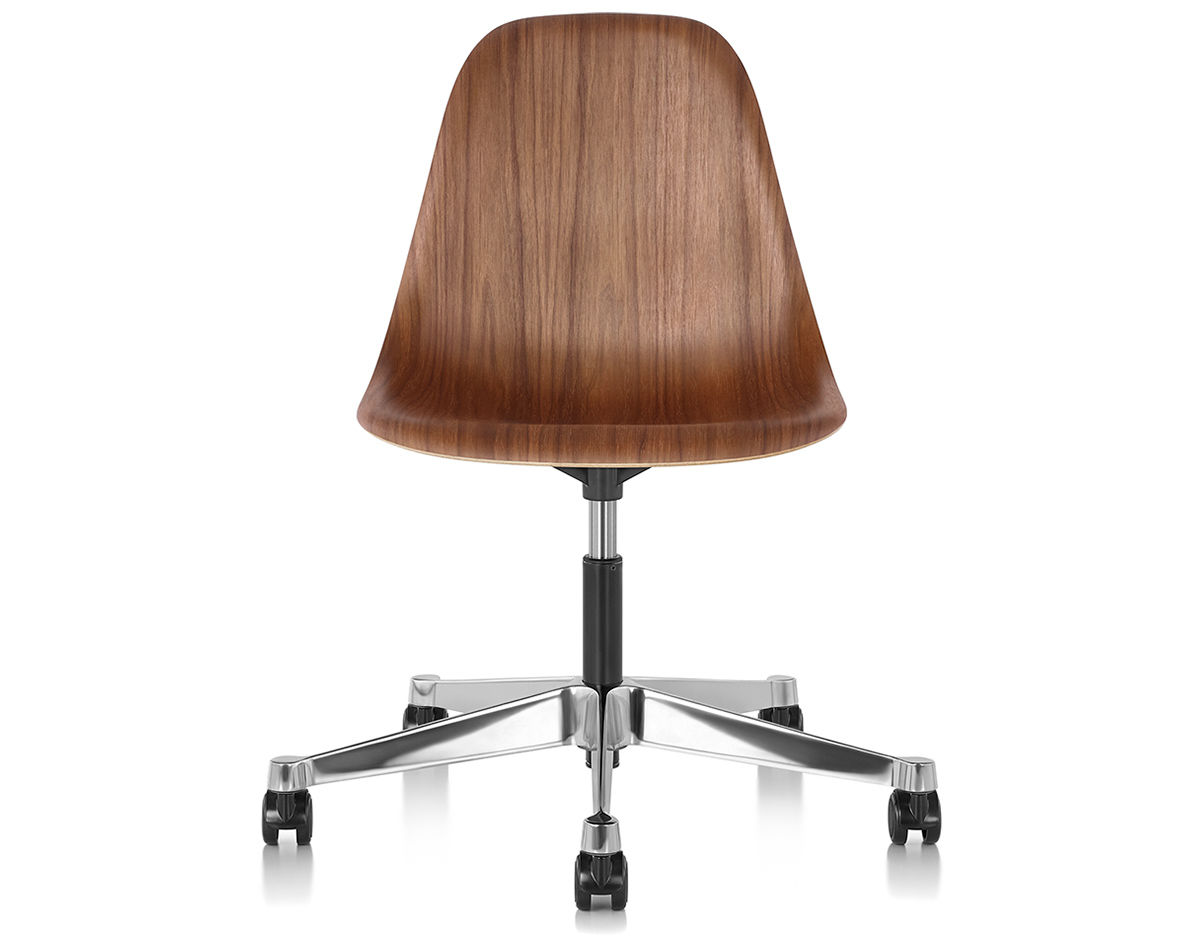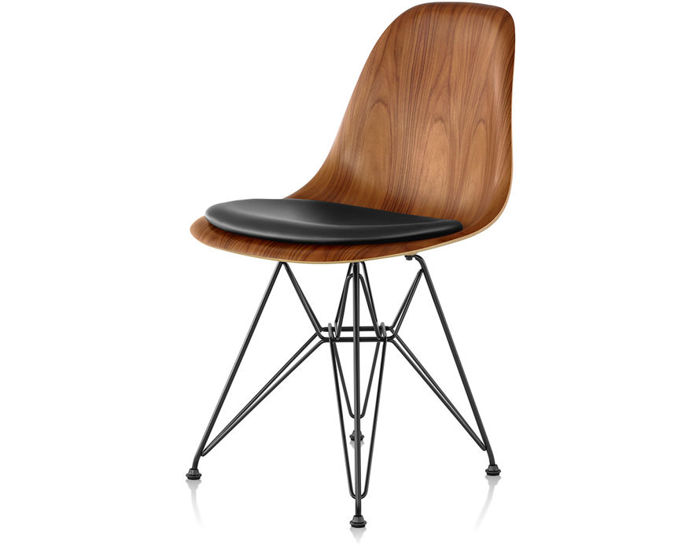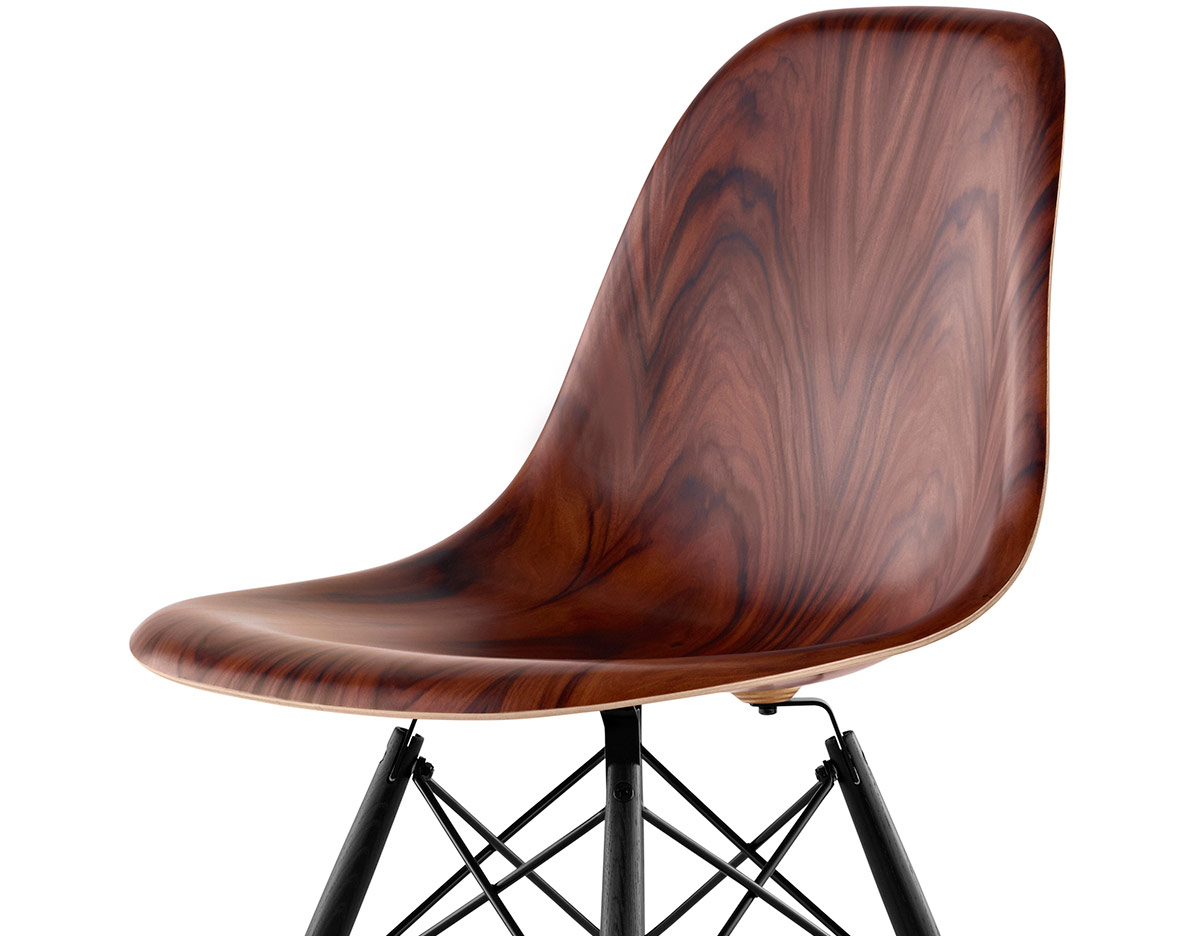The Eames Wood Side Chair

The Eames Wood Side Chair, a timeless design icon, embodies the principles of form following function and minimalist aesthetics. Its enduring popularity stems from its versatility, comfort, and elegant simplicity. This chair, born from the creative genius of Charles and Ray Eames, has become a staple in homes, offices, and public spaces worldwide.
Design History and Evolution, Eames wood side chair
The Eames Wood Side Chair’s journey began in the 1940s, during the formative years of the Eames Office. The chair’s initial design was a response to the need for affordable and functional furniture for the postwar era. Charles and Ray Eames, driven by their desire to democratize good design, explored innovative ways to create furniture that was both beautiful and accessible.
The Eames Wood Side Chair underwent several iterations before its final form was realized. Early prototypes were crafted using plywood and molded plastic, but the Eameses eventually settled on a design featuring a molded plywood shell supported by a sturdy wooden base. This design, characterized by its curved contours and graceful lines, was introduced in 1946 and quickly gained recognition for its innovative use of materials and its timeless aesthetic.
Unique Features and Functionality
The Eames Wood Side Chair’s distinctive design features contribute significantly to its functionality and aesthetics. The chair’s contoured plywood shell, molded into a single, seamless piece, provides exceptional comfort and support. The curved shape of the shell, inspired by the human form, cradles the body and promotes a sense of relaxation.
The chair’s wooden base, available in various finishes, adds a touch of warmth and natural beauty to the design. The base’s simple yet elegant structure provides stability and durability, ensuring that the chair can withstand the test of time. The chair’s versatility is further enhanced by the availability of various base options, including a four-legged base, a rocker base, and a swivel base, allowing users to choose the configuration that best suits their needs.
Materials and Construction
The Eames Wood Side Chair’s construction utilizes high-quality materials that contribute to its durability and aesthetic appeal. The chair’s shell is crafted from molded plywood, a material known for its strength, flexibility, and ability to conform to the human form. The plywood used in the chair’s construction is carefully selected and treated to ensure its longevity and resistance to warping and cracking.
The chair’s base is made from solid wood, typically beech or maple, chosen for its durability and natural beauty. The wood is carefully finished to enhance its grain patterns and provide a smooth, tactile surface. The chair’s construction is meticulous, with each piece carefully joined and assembled to create a sturdy and enduring piece of furniture.
Eames Wood Side Chair Variations and Models

The Eames Wood Side Chair, a testament to Charles and Ray Eames’ design ingenuity, has been produced in various models and variations, each reflecting unique design choices and materials. This evolution reflects their constant pursuit of innovative design solutions, catering to diverse aesthetic preferences and functional requirements.
Eames Wood Side Chair Models
The Eames Wood Side Chair encompasses a range of models, each characterized by specific design features and material choices.
- Eames Wood Side Chair (DSW): This model, commonly known as the “Dining Side Chair Wood,” features a contoured plywood shell with a slender, tapered wood base. Its iconic design, characterized by its organic curves and elegant simplicity, has made it a timeless classic. The DSW is available in various finishes, including natural wood, stained wood, and painted wood.
- Eames Wood Side Chair (DSR): The DSR, or “Dining Side Chair Rod,” shares the same contoured plywood shell as the DSW, but it features a more robust, wire-based base. The wire base adds a touch of industrial aesthetic, making the DSR a versatile choice for both residential and commercial settings. The DSR, like the DSW, comes in a range of finishes and colors.
- Eames Wood Side Chair (DCW): The DCW, or “Dining Chair Wood,” features a similar contoured plywood shell but is distinguished by its unique, four-legged base. The DCW’s base, crafted from solid wood, provides a stable and sturdy foundation. It is available in various wood finishes, offering a warm and classic aesthetic.
- Eames Wood Side Chair (DAR): The DAR, or “Dining Armchair Rod,” is a variation of the DSR, incorporating armrests for added comfort. The armrests, crafted from the same molded plywood as the seat, seamlessly integrate into the overall design. The DAR, like the DSR, comes in a range of finishes and colors.
Eames Wood Side Chair Variations
The Eames Wood Side Chair has been produced in numerous variations, reflecting different material choices, colors, and finishes.
- Material Variations: The Eames Wood Side Chair has been produced with a variety of materials, including plywood, wood, and metal. The plywood shell, a defining feature of the chair, is available in various finishes, such as natural wood, stained wood, and painted wood. The base, depending on the model, can be made from solid wood, wire, or metal.
- Color Variations: The Eames Wood Side Chair comes in a wide array of colors, offering diverse aesthetic options. The plywood shell can be stained in various shades, from natural wood tones to vibrant hues. The wire base, often powder-coated, is available in a range of colors, including black, white, and chrome. The solid wood base, depending on the model, can be stained in various colors, offering a warm and classic aesthetic.
- Finish Variations: The Eames Wood Side Chair is available in various finishes, including natural wood, stained wood, and painted wood. The natural wood finish showcases the inherent beauty of the wood grain, while stained wood finishes offer a wider range of colors and shades. Painted wood finishes provide a more modern and contemporary aesthetic.
Material Considerations
The Eames Wood Side Chair’s materials are integral to its design, functionality, and aesthetic appeal.
- Plywood Shell: The iconic contoured plywood shell is a testament to Charles and Ray Eames’ innovative use of materials. The plywood, composed of thin layers of wood veneer glued together, provides strength, durability, and flexibility. The shell is molded to conform to the human body, providing both comfort and support. The plywood shell is available in various finishes, including natural wood, stained wood, and painted wood.
- Wood Base: The wood base, depending on the model, is crafted from solid wood, providing a stable and sturdy foundation. The wood base, available in various finishes, adds a warm and classic aesthetic to the chair. The solid wood base is often used in models like the DCW, which features a unique four-legged base.
- Wire Base: The wire base, commonly used in models like the DSR, offers a more robust and industrial aesthetic. The wire base, often powder-coated, is available in a range of colors, adding a contemporary touch to the chair.
- Metal Base: The metal base, while less common, is used in some models, providing a durable and modern aesthetic. The metal base, often powder-coated, is available in a range of colors, offering a contemporary and industrial touch to the chair.
The Eames Wood Side Chair in Context

The Eames Wood Side Chair, a testament to the enduring power of simplicity and functionality in design, occupies a prominent position within the broader history of furniture design. Its genesis, rooted in the mid-20th century, reflects the confluence of modernist principles and a burgeoning American design scene. The chair’s influence, however, extends far beyond its initial conception, shaping contemporary and modern furniture design to this day.
The Eames Wood Side Chair’s Place in Furniture Design History
The Eames Wood Side Chair emerged during a pivotal period in furniture design, marked by a shift towards functionality, minimalism, and a rejection of ornate Victorian aesthetics. The chair’s design, characterized by its clean lines, organic curves, and use of natural materials, embodied the principles of the modernist movement. It was a departure from the heavy, elaborate furniture prevalent in the early 20th century, instead prioritizing comfort, durability, and affordability.
The chair’s creation coincided with the rise of industrial design, a movement that sought to apply design principles to mass-produced goods. The Eameses, pioneers of industrial design, embraced this philosophy, utilizing innovative manufacturing techniques to create a chair that was both elegant and accessible.
“The most important thing is to be honest. If you can’t be honest, you can’t be good.” – Charles Eames
The Eames Wood Side Chair’s Influence on Contemporary and Modern Furniture Design
The Eames Wood Side Chair’s influence on contemporary and modern furniture design is undeniable. Its minimalist aesthetic, emphasis on functionality, and use of natural materials have become hallmarks of modern design. The chair’s enduring popularity is a testament to its timeless appeal and its ability to seamlessly integrate into a variety of settings.
The Eames Wood Side Chair’s legacy is evident in the work of countless contemporary designers, who continue to draw inspiration from its simplicity and elegance. The chair’s influence can be seen in the minimalist designs of Scandinavian furniture, the clean lines of mid-century modern furniture, and the use of natural materials in contemporary furniture.
The Eames Wood Side Chair’s Use in Various Settings
The Eames Wood Side Chair’s versatility extends beyond its aesthetic appeal, making it suitable for a wide range of settings. From homes to offices to public spaces, the chair’s adaptability allows it to seamlessly integrate into diverse environments.
Home Settings
The Eames Wood Side Chair is a popular choice for home settings, adding a touch of sophistication and elegance to living rooms, dining rooms, and bedrooms. Its timeless design complements a variety of interior styles, from minimalist to traditional.
Office Settings
The chair’s functionality and comfort make it an ideal choice for office settings. Its sleek design and durable construction ensure that it can withstand the demands of everyday use.
Public Spaces
The Eames Wood Side Chair’s durability and timeless appeal make it a popular choice for public spaces, including restaurants, cafes, and waiting areas. Its ability to blend seamlessly into a variety of environments makes it a versatile and enduring choice for public spaces.
The Eames Wood Side Chair, with its iconic design and timeless elegance, embodies a philosophy of simplicity and functionality. But sometimes, you crave a touch of tropical luxury, a feeling of being transported to a serene beachside retreat. That’s where the costco tommy bahama wood chair comes in, offering a comfortable and stylish escape right in your own home.
While the Eames chair might inspire you to work, the Tommy Bahama chair encourages you to relax, to savor the moment, and to find peace in the simple act of sitting.
The Eames Wood Side Chair, with its iconic design and simple elegance, embodies the spirit of mid-century modernism. It’s a testament to the power of thoughtful design, where form and function seamlessly intertwine. This iconic chair is a perfect example of how a wood frame chair and ottoman, like those often found in contemporary living spaces , can be both beautiful and practical.
The Eames Wood Side Chair, with its enduring appeal, continues to inspire designers and homeowners alike, reminding us that timeless elegance can be found in the simplest of forms.
